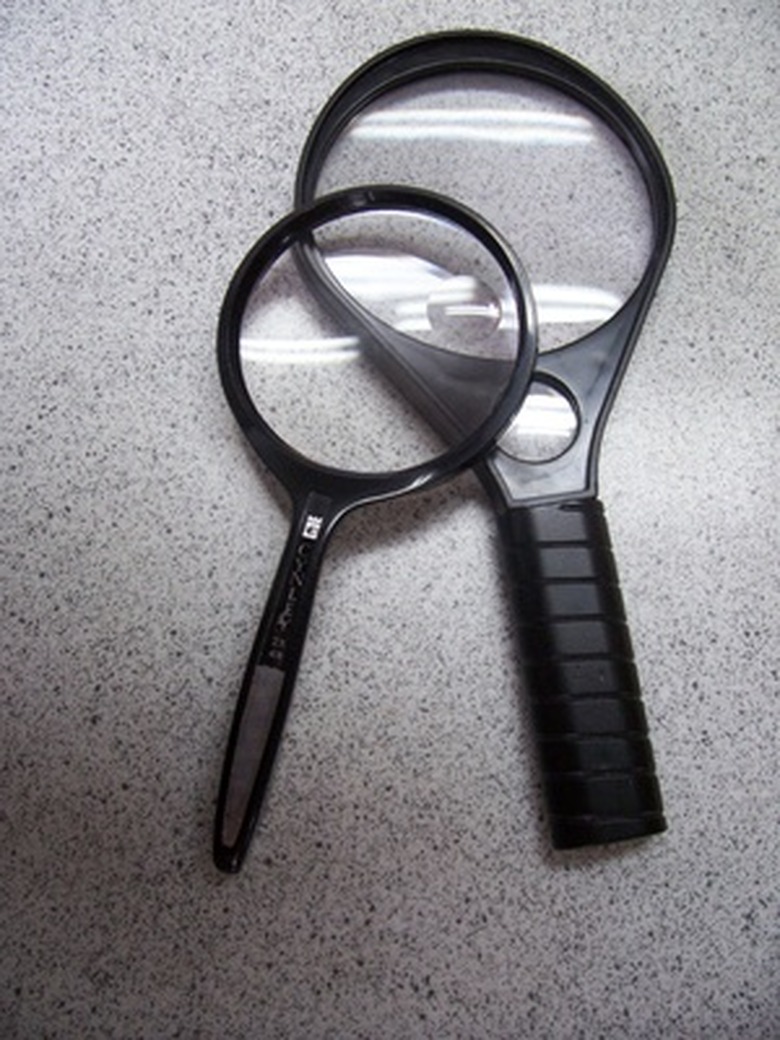How To Convert Magnification To Dioptors
Magnification and diopters are actually two different measurements. Magnification is a measurement of the change in the size of the object viewed through the lens. Diopter is the measurement of the lenses ability to bend light. Because the lens' function of bending light accomplishes the magnification, the two measurements are related and if the magnification is known the diopters can be calculated.
Step 1
Note the magnification power of the lens or lens system. A magnification power of 1x indicates a 100 percent or doubling of the perceived size of the object viewed through the lens when compared to the same object viewed with the naked eye. A 2.5x power lens would increase the size of the object by 250 percent. A 3-inch object would appear as 10 1/2 inches through the lens. The increase in the size of the object is 7 1/2 inches (3 inches times 2.5) plus the original size of the object.
Step 2
Calculate the diopters of the lens by multiplying the magnification by four. The amount the light is bent by one diopter amounts to an increase of 25 percent in the size of the viewed object. A lens with a light bending capacity of four diopters, stated as 4d, would double the size of the object and have a magnification of 1x.
Step 3
Calculate the total power of the lens by adding 1 to the magnification power. This is the measurement most often quoted in binoculars or telescopes because it is easier to understand. If a 1x magnification doubles the visual size of the object adding 1 to it, the formula for total power, results in 2x total power. The relationship between how the object is perceived and the total power is a more easily understood relationship.
TL;DR (Too Long; Didn't Read)
Read the information with any binocular or telescope carefully before undertaking the conversion to diopters. Be sure the quoted measurement is magnification rather than total power. If the measurement is total power subtract 1 from it to determine magnification. The formula to determine diopters can then be applied.
Cite This Article
MLA
Allen, Keith. "How To Convert Magnification To Dioptors" sciencing.com, https://www.sciencing.com/convert-magnification-dioptors-6833390/. 24 April 2017.
APA
Allen, Keith. (2017, April 24). How To Convert Magnification To Dioptors. sciencing.com. Retrieved from https://www.sciencing.com/convert-magnification-dioptors-6833390/
Chicago
Allen, Keith. How To Convert Magnification To Dioptors last modified March 24, 2022. https://www.sciencing.com/convert-magnification-dioptors-6833390/
